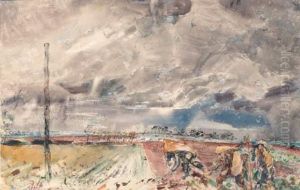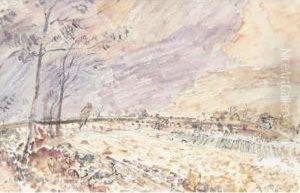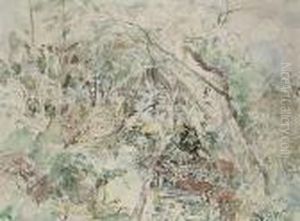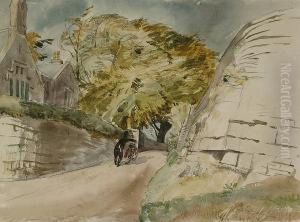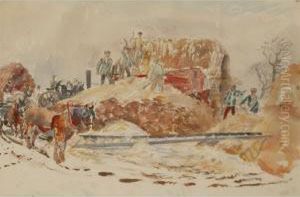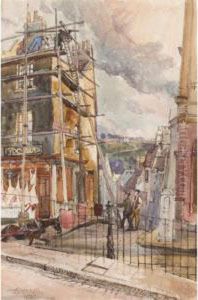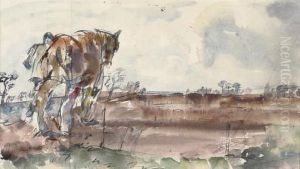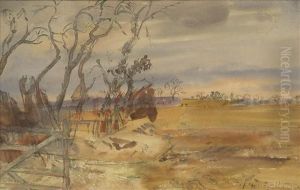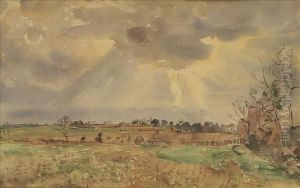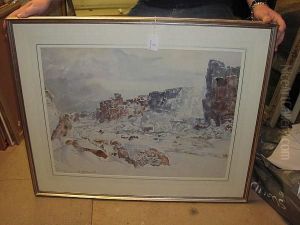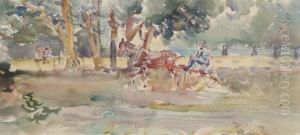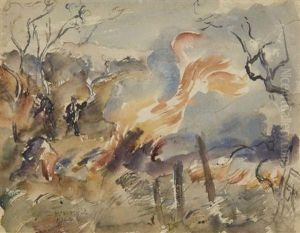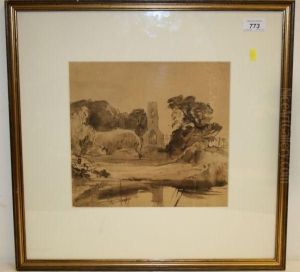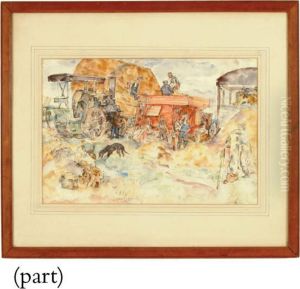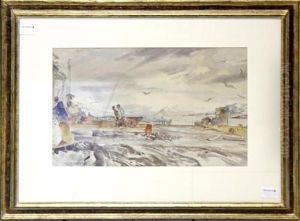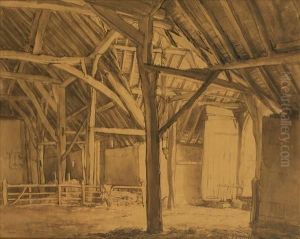Thomas Barclay Hennell Paintings
Thomas Barclay Hennell was a British artist known for his unique contribution to British art, particularly through his work as a war artist during World War II. Born on June 16, 1903, in Ridley, Kent, England, Hennell grew up in a rural setting that deeply influenced his artistic direction, often reflecting a strong connection to the land and agricultural life in his works.
Hennell pursued his education in art at Regent Street Polytechnic (now the University of Westminster) and later at the Royal College of Art, where he honed his skills and developed a keen interest in capturing the essence of rural Britain. In the 1930s, Hennell embarked on extensive travels within the United Kingdom, documenting traditional farming methods and rural crafts that were rapidly disappearing due to modernization. His work during this period was marked by a strong sense of nostalgia and a deep reverence for the pastoral life, which he believed was an integral part of British heritage.
As World War II engulfed Europe, Hennell's career took a significant turn when he was appointed as an official war artist by the War Artists' Advisory Committee in 1940. This role led him to various fronts of the conflict, including Iceland, where he depicted the British troops' life and the landscapes that surrounded them. Later, his assignment extended to the Far East, particularly to India and Burma (now Myanmar), where he captured the harsh realities of war and the diverse cultures of the British Empire.
Hennell's works from this period are notable for their vivid portrayal of war's impact on both the landscape and the human spirit, showcasing his remarkable ability to convey emotion and atmosphere through his art. His paintings and drawings from the war years are considered some of the most poignant and evocative records of British involvement in World War II.
Tragically, Thomas Barclay Hennell's promising career was cut short when he was declared missing, presumed killed, in November 1945, while on assignment in Indonesia. His disappearance occurred shortly after the end of the war, during the tumultuous period of Indonesia's struggle for independence from Dutch colonial rule. Hennell's body was never recovered, and his death marked a profound loss to the British art world.
Despite his untimely death, Hennell's legacy lives on through his extensive body of work, which continues to be celebrated for its profound insight into the British countryside, its people, and the dramatic events of the 20th century. His art provides a unique window into the rapidly changing world of his time, capturing the beauty and tragedy of an era marked by both progress and conflict.
